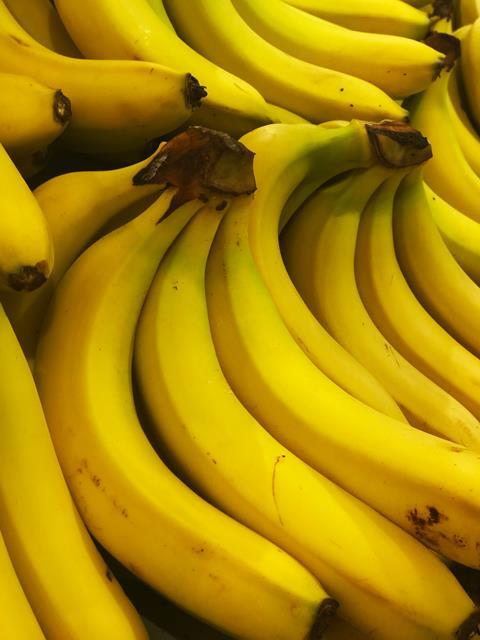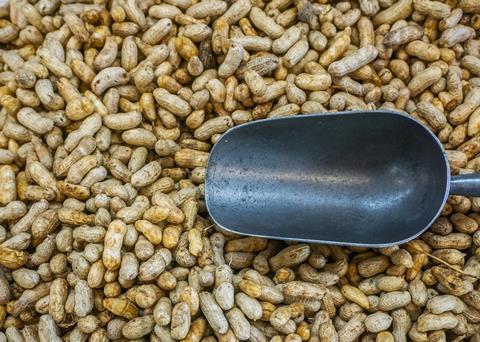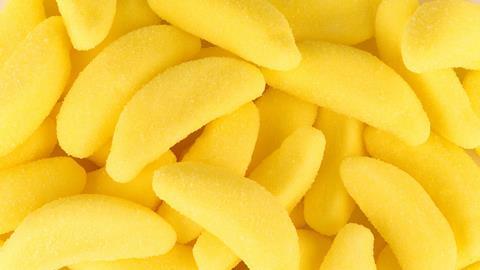Meera Senthilingam
This week, you may want to hold your nose, and Jenna Bilbrey explains why.
Jenna Bilbrey
The undergraduate chemistry lab activity most clearly vivid in my memory is the day we made isoamyl acetate. It’s not an explosion or brightly coloured product or even an unusual glassware setup I remember. It’s the smell. After an hour of refluxing isoamyl alcohol and acetic acid – a combination that smells bad but not out-of-the-ordinary bad, for a chemistry lab – my mouth began to water and I got a sudden craving for bananas. Yes, that’s right. Isoamyl acetate is the smell and flavour of bananas.

It’s commonly made in undergraduate organic chemistry labs as its synthesis is an ideal representation of a nucleophilic substitution. The reaction, called Fischer esterification, occurs when an alcohol, in this case isoamyl alcohol, reacts with a carboxylic acid, glacial acetic acid here. With the help of heat and an acid catalyst, an ester is formed.
The smell of nearly all fruits comes from aliphatic esters, simple molecules containing a carboxylic group directly beside an ether linkage leading to alkyl or aryl groups. Molecules with a small number of carbons smell fruity, but once more carbons are added the smell changes to soapy or even metallic. Isoamyl acetate has only six carbons so its smell is distinctly sweet. These esters can also be found in non-fruit sources such as peppermint and green tea.
Unlike their parent alcohols, esters can’t act as donors in hydrogen bonding and, as such, they don’t self-associate. This leads to esters being more volatile than carboxylic acids of similar molecular weight. The aerated molecules become lodged in our noses’ odour receptors, signals are sent to our brains and our sense of smell activates.
Even small changes in molecular structure can create distinct smells. If we cut one carbon out of isoamyl acetate to make isobutyl acetate, the smell is, once again, fruity but is more common to raspberry. Move the substituent carbon directly next to the ester to form sec-butyl acetate and the smell stays sweet, but with a hint of solvent. Cut it down again to ethyl acetate and we get fingernail polish remover. Three carbons is all it takes to go from mouth-watering to nose-pinching.

As I mentioned earlier, isoamyl acetate has the smell and flavour of bananas. An actual banana is a combination of starches, amino acids, and amyl acetate, along with our namesake molecule. But many artificial banana-flavoured products contain solely isoamyl acetate. It’s used as a flavouring in a variety of processed foods: drinks, chewing gum, baked goods, and most notably candy, such as Runts banana candies and circus peanuts. The flavour of isoamyl acetate is exceedingly strong and can be tasted in concentrations as low as 2 parts per million, which is roughly a single drop for every 50 litres.
If you’re not a big sweets eater, you may have tasted isoamyl acetate in an unexpected source: beer. Isoamyl acetate is naturally produced by yeast during fermentation. Weissbeers (most notably Bavarian Hefeweizen), sahtis, and some Belgian brews use the artificial flavour of bananas to enhance complexity and lend a fruity tone to the beer. While banana flavour is tasty in some brews, it can be repulsive in others, like lagers.
During fermentation, isoamyl acetate is formed by an enzyme called acetate transferase. Controlling the type of yeast will control the enzyme so it’s important to choose the right yeast for the right beer. Another way to control ester formation is by temperature, where higher temperatures promote acetate formation. If you’re a home brewer and want some fruitiness in your beer, try fermenting between 21 and 24 degrees Celsius. A common mistake of new brewers is to ferment lagers at room temperature, which results in a fruity lager – not at all what is wanted!
So next time you smell bananas in your beer or taste them in your sweets, remember that one little molecule lodged in your sensory receptors is making that bold flavour.
Meera Senthilingam
Single and bold – quite a combination. Science writer Jenna Bilbrey there, with the bold chemistry of isoamyl acetate. Next week, we go from bold to cold.
Helen Scales
Icy waters that surround Antarctica are inhabited by fish that don’t freeze. That’s despite the fact that the water is usually around minus 1.8°C, cold enough to turn most fish into a solid block of ice. So, what stops the Antarctic fish from freezing?
Meera Senthilingam
Find out with Helen Scales in next week’s Chemistry in its Element. Until then, thank you for listening, I’m Meera Senthilingam.













No comments yet